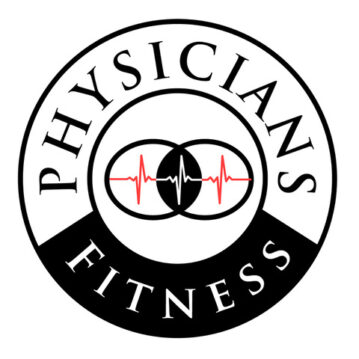Co-Authored by Greg Mack, ACE-CMES and Jay Weitzner, ACE-CMES, CMSS
How can something as simple and routine as sneezing, coughing, walking, or getting up from a chair suddenly cause a muscle or joint injury and a bodily sensation you don’t like (pain, tightness, hurt, etc)?
How are you alerted that you’ve injured a muscle or joint structure?
How do you know if a sensation like pain is just a warning for a possible future injury of a muscle or joint versus an actual injury?
What are the words you use to describe the sensations that you don’t like when you are injured, or might be injured?
Do you choose any of these?
|
Pain/Painful |
Awkward |
Burn/Burning |
Weakness/Weak |
|
Aches/Achy |
Stuck |
Nervy |
Hurts |
|
Stiffness/Stiff |
Restricted |
Crunchy |
Unstable |
|
Tightness/Tight |
Numb/Numbness |
Noisy |
Restricted |
|
Ouch |
Tingle/Tingling |
Pinchy |
Your favorite? |
Are you familiar with the idiom “The straw that broke the camel’s back”?
This simple phrase captures the idea that a seemingly minor or routine action can cause an unpredictably large and rapid reaction, due to the cumulative effect of many previous small actions. Typically we blame the last straw right? But the real problem is the progressive accumulation of the small problems (straws) prior to the last straw (cough or sneeze) being added to the camel’s back!
How about the analogy of a cup of water that is completely full where even the smallest addition of water causes the cup to overflow and make a mess? We blame the drop of water for the overflow but the real problem is the water already filling the cup. It’s like blaming the cough or sneeze when it was really the vulnerable body state that already existed prior to the cough or sneeze.
Keep this idiom and analogy, and their meaning, in mind as we explore the following four scenarios that relate bodily injury, the warning of potential bodily injury, and the subjective sensations that may accompany them.
- No injury and no sensation (No Alert and No Warning)
- No Injury and sensation (Warning)
- Injury and sensation (Alert)
- Injury and no sensation (No Alert and No Warning)
These are the definitions used in this blog for key words:
Alert means that there has been material damage
Warning means that material damage is possible/imminent
Sensation means that information from your body has reached your brain, a conclusion has been drawn, and a word has been chosen to describe it.
Force means the stress or force on the body’s materials (cartilage, tendons, bones, ligaments, muscles, joints, etc.) created by the body’s own mass/weight and/or muscle contraction (the source of the stress or force).
Injury means when a stress or force exceeds the failure tolerance of a bodily material (cartilage, tendons, bones, ligaments, muscles, joints, etc.), that material is damaged, and there is an inflammatory response.
Let’s take a closer look at these 4 scenarios’:
- No Injury and No Sensation (No Alert and No Warning)
Here is a scenario where the Cup (some part of the body) has some water but still plenty of room for more (all of the body tissues and systems are working well) without danger of overflow and making a mess (injury). The Camel (some part of the body) is carrying some straw (has some stress or force on it) but can easily carry more without risk of injury to its back. The conclusion is that everything is ok and there is no need to “heal, fix, or recover”. Any action to be taken is to work to improve the body’s capabilities by strategically exposing it to appropriate doses of stress (force), and then resting to recover, in order to adapt and become more resistant to injury in the future. This is one of the purposes of regular, and appropriately dosed, physical exercise.
- No Injury and Sensation (Warning)
Here is a scenario where the Cup (some part of the body) has a lot of water (stress or force), is running out of room for more, and the danger of overflow (excessive stress or force) and making a mess (injury) is possible. The Camel (some part of the body) is carrying a lot more straw (stress), and cannot easily carry more, without feeling burdened on its back (cartilage, tendon, joint, muscle). This may manifest as a loss of muscle and joint flexibility, loss of strength or performance, and new sensations that you don’t like (See list above). The conclusion is that something is amiss and a change is needed to ward off injury. Any action to be taken is to work to reduce the force on the vulnerable parts of the body and strategically apply force and rest to regain functionality and avoid injury.
- Injury and Sensation (Alert)
Here is a scenario where the Cup (some part of the body) was nearly or completely full of water (stress or force) and enough was added that the Cup overflowed making a mess (injury). The Camel (some part of the body) was carrying its full load of straw (stress or force) and enough was added that the Camel’s back broke (injury to cartilage, tendon, joint, muscle). These manifest as a loss of muscle and joint flexibility, loss of strength or performance, swelling, skin color changes (redness and/or bruising), and new sensations that you don’t like (See list above). The conclusion is that something is damaged. Any action to be taken at this point is to work to eliminate the stress or force on the injured part of the body and allow the healing process to run its course.
- Injury and No Sensation (No Alert and No Warning)
Here is a scenario where the Cup (some part of the body) was nearly or completely full of water (stress or force) and enough was added that the Cup overflowed making a mess (injury). The Camel (some part of the body) was carrying its full load of straw (stress or force) and enough was added that the Camel’s back broke (injury to cartilage, tendon, joint, muscle). However, for some reason you did not receive an Alert (you did not experience any sensations you did not like).
The conclusion is that everything is ok. Any action to be taken is to work to improve the body’s capabilities by strategically exposing it to appropriate doses of force in order to get it to adapt and become more resistant to injury in the future. However, when an injury exists and no behavior change is implemented, things will likely worsen. This is the reason to get regular preventative check-ups of your bodily control systems in order to possibly discover this scenario and work to improve it before a more serious injury occurs.
Let’s take another look at those words listed previously – to describe sensations that you don’t like – and see if they can be exclusively assigned to the terms Alert or Warning, or to both:
|
Word |
Alert |
Warning |
|
Pain/Painful (Both) |
x |
x |
|
Aches/Achy |
x |
x |
|
Stiffness/Stiff |
x |
x |
|
Tightness/Tight |
x |
x |
|
Ouch |
x |
x |
|
Weakness/Weak |
x |
x |
|
Hurts |
x |
x |
|
Pinchy |
x |
x |
|
Awkward |
x |
x |
|
Stuck |
x |
x |
|
Restricted |
x |
x |
|
Numb/Numbness |
x |
x |
|
Tingle/Tingling |
x |
x |
|
Burn/Burning |
x |
x |
|
Nervy |
x |
x |
|
Crunchy |
x |
x |
|
Noisy |
x |
x |
As you can see, the problem with common words used to describe sensations people don’t like – and can’t see the reason for – is that they may be used for either scenario – Alert and Warning. So the words are a good and necessary start but aren’t enough to define the situation. You need a thorough physical assessment.
So now what to do when you get an Alert or Warning?
Heed the warnings! (even the little ones)
When you experience an unusual sensation that you do not like (and maybe you choose to use the word pain) you should seek a licensed medical professional to ensure that it is not a more serious issue (infection, tumor) other than a warning or alert about a muscle or joint injury.
If the medical provider diagnoses a muscle or joint problem, or potential for one, then you may be presented with some options: medications, physical therapy, or a surgical consultation.
If you do not want to use drugs, surgery, or traditional physical therapy, then a new approach using personalized and highly specialized exercises, that considers your entire unique body system, may be an option. An Exercise Professional who is certified as a Muscle System Specialist can offer this more comprehensive, wholistic, and individualized problem-solving approach.
What should you do if you don’t have any warnings?
Be proactive and establish a relationship with an Exercise Professional who is a Certified Muscle System Specialist who can assess your unique movement capabilities, support your body with strategic and progressive exercises so that it is more resilient and robust, and prevent something as innocuous as a sneeze or cough from injuring you.
Forging a professional relationship with an Exercise Professional who is a Certified Muscle System Specialist – working in conjunction with your medical providers – is a smart decision to improve your muscle and joint health. Together you will work to obtain, and sustain, a high quality of life based on high quality movement – avoiding breaking the Camel’s back and making a mess by overfilling the cup.
- Rethink Exercise!
If you're interested in learning more about how a Certified Muscle System Specialist™ can help you move better, feel better, and live better, click here.
To find a Certified Muscle System Specialist™ near you, see our see our list of practitioners throughout the U.S. and Canada at https://www.exerciseproed.com/mss-certified-practitioners/
If you're an exercise professional who is interested in learning more about how to become a Certified Muscle System Specialist™, visit us at www.exerciseproed.com.


Recent Comments